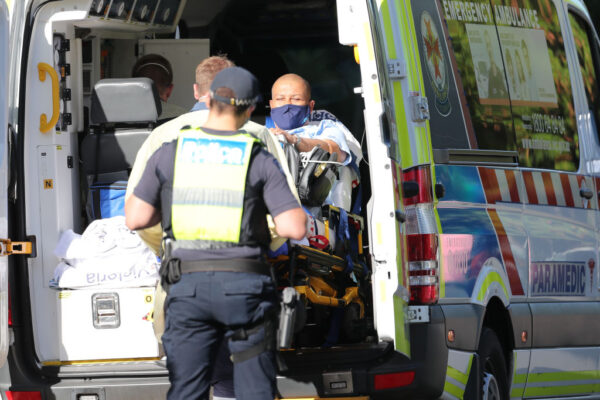This article first appeared in the Council of Ambulance Authorities magazine, First, in December 2020.
Following the success of the Corvanta ideas board at the CAA 2019 congress, in 2020, the concept moved to a contactless, interactive online version to collect ideas about improving response to the COVID-19 pandemic.
If you were at the CAA Congress in Perth in 2019, you would have seen the Corvanta ideas board which displayed delegate ideas on how the industry can produce better patient outcomes by enabling a more connected patient journey. These ideas were also transformed into illustrations by an artist during the event.
When Ideas Become Reality
As the extent of the COVID-19 pandemic became apparent, some of the ideas that had been shared at CAA19 turned out to have practical applications for responders. For example, the ability to source more detailed patient information within a mobile application. The future had arrived more quickly than anyone had ever anticipated.
The responses posted to the 2019 ideas board proved that there is a vast collective knowledge amongst emergency services professionals, from operations to clinical staff, administration, and management. This led to Corvanta and the CAA revisiting the ideas board in 2020 for the ambulance industry to share their thoughts. This information sharing was especially important to optimise the emergency service response to the COVID-19 situation.
Many of the major themes submitted this year were pertinent to the COVID-19 response, and included real-time information and communications, paramedic safety and well-being, and effective applications of new technology such as applications and AI.
Webinar Discussion: COVID-19 Collective Knowledge
During a webinar held in August, hosted by David Waters, Council of Ambulance Authorities CEO, guest speakers discussed and analysed the ideas raised. You can view the webinar highlights below:
Associate Professor Mick Stephenson ASM, Executive Director of Clinical Operations at Ambulance Victoria pointed out that “you can never be too well-prepared, particularly in terms of your PPE cache”. Early in the pandemic, higher prices offered by overseas buyers to Australian PPE manufacturers saw local supplies suddenly rerouted offshore. “A lot of services have discovered that a traditional supply level of PPE doesn’t service what you need in a pandemic situation,” said Mick.
In the context of a pandemic, knowing in real-time exactly what kinds of PPE are available as well as their stock levels is crucial. Having asset management technology in place can help manage this effectively, which in turn enables health and safety measures for both emergency services staff and patients.
How Technology Has Helped
Prof Ng Yih Yhg, Consultant and Emergency Physician at TTSH and Central Health Singapore described how the pandemic has fast-tracked technology developments that streamline emergency response and simplify complex tasks.
This includes a ‘Big Data’ analytics platform, that was built in just two months by the Singapore Government to automate the search for associations and relations between COVID-19 patients and potential contacts. Although the technology is useful in identifying contacts, it can’t replace human intelligence yet. “Once associations have been found, the contact tracers still have to call people, speak to them and understand whether the association is real or just transient and not significant,” said Yih Yhg.
James Wetherall, Managing Director of Emergency Services at Corvanta, discussed developments in technology-driven communications – for example, how real-time digital dashboards monitor vehicles and provide alerts to paramedics when an ambulance enters a COVID-19 hot spot. James also explored how social media platforms should integrate into the overall communications plan. One of the ideas put forward was about using online tutorials to demonstrate the correct donning and doffing of PPE. Mick Stephenson said AI is currently being tested using an iPad camera to tell users whether they are removing PPE correctly and safely.
Conclusion
As the ambulance sector continues to adapt to the multiple challenges of COVID-19, the opportunity for new technology and creative ideas – like those submitted to the ideas board – is more relevant than ever.
Corvanta remains dedicated to working alongside emergency response professionals in Australia and New Zealand to identify collaborative solutions that will take the industry into a more efficient future.




